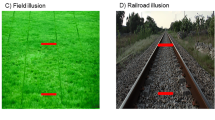Abstract
The argument from appearance for the content view or intentionalism attracts a lot of attention recently. In my paper, I follow Charles Travis to argue against the key premise that representational content can be ‘read off’ from a certain way that a thing looks to a subject. My arguments are built upon Travis’s original objection and a reinterpretation of Rodrick Chisholm’s comparative and noncomparative uses of appearance words. Byrne, Schellenberg and others interpret Travis’ ‘visual looks’ as Chisholm’s comparative use, and appeal to the noncomparative use as an alternative to avoid Travis’s objection. I demonstrate that they misunderstand both Chisholm and Travis. Both the comparative use and the noncomparative use are semantic notions, while ‘visual looks’ is a metaphysical one. Although Chisholm’s appearance objectivism –– that appearance expressions attribute appearances to ordinary objects –– is close to ‘visual looks’, appearance objectivism is not exceptional to the noncomparative use as Byrne interprets. In the end, I also show that Byrnean’s conception of distinctive visual gestalt cannot exclude contrary representational contents, because a distinctive visual gestalt can be shared by different kinds of things. Besides, Byrne and others do not explain why a distinctive visual gestalt should be presented as ‘being instantiated’. Therefore, I conclude that representational content cannot be read off from a certain way that a thing looks to a subject; the argument from appearance thus fails.

Similar content being viewed by others
Notes
A similar view is shared by Brewer (2006, p.174).
For the detailed and more lucid discussion about the notion of availability, see Wilson (2018).
Briefly, Jackson argues that material things do not have color properties because color properties do not serve any scientific causal explanation of the interactions between objects, while sense-data as the immediate perceptual objects have color properties. Hence, sense-data are not material but mental. See Jackson (1977, pp. 120–28).
Jackson’s detailed argument for the independence of the phenomenal use can be seen in (1977, pp. 34 − 6). For the objection, see Martin (2010, p. 180-1).
See Jackson (1982).
Wilson (2018) has a more detailed analysis on Travis’s view on looks.
I thank one referee for posing this challenge.
Brogaard (2017) has a more detailed discussion of dual looks.
References
Brewer, B. (2006). Perception and content. European Journal of Philosophy, 14(2), 165–181
Brewer, B. (2008). How to account for illusion. In A. Haddock, & F. Macpherson (Eds.), Disjunctivism: Perception, Action, Knowledge (pp. 168–180). Oxford University Press
Brewer, B. (2011). Perception and Its Objects. Oxford University Press
Brogaard, B. (2015). Perceptual Reports. In Mohan Matthen (ed.), Oxford Handbook of the Philosophy of Perception. Oxford University Press
Brogaard, B. (2017). Perception Without Representation? On Travis’s Argument Against the Representational View of Perception. Topoi, 36(2), 273–286
Byrne, A. (2001). Intentionalism defended. Philosophical Review, 110(2), 199–240
Byrne, A. (2009). Experience and content. Philosophical Quarterly, 59(236), 429–451
Chisholm, R. M. (1957). Perceiving: A Philosophical Study (9 vol.). Cornell University Press
Crane, T. (2009). Is Perception a Propositional Attitude? Philosophical Quarterly, 59(236), 452–469
Crane, T. (2013). The Given. Joseph Schear (ed.), Mind, Reason and Being-in the-World: the McDowell-Dreyfus Debate (pp. 229–249). London: Routledge
Dretske, F. (1995). Naturalizing the Mind. MIT Press
Glüer, K. (2017). Talking about Looks. Review of Philosophy and Psychology, 8(4), 781–807
Harman, G. (1990). The intrinsic quality of experience. Philosophical Perspectives, 4, 31–52
Ivanov, I. (2017). Property-awareness and representation. Topoi, 36(2), 331–342
Jackson, F. (1977). Perception: A Representative Theory. Cambridge University Press
Jackson, F. (1982). Epiphenomenal qualia. Philosophical Quarterly, 32(April), 127–136
Raleigh, T. (2013a). Phenomenology without Representation. European Journal of Philosophy, 21(3), 1209–1237
Martin, M. G. F. (2010). What’s in a look?. In Bence Nanay (ed.), Perceiving the World (pp. 160–225). Oxford University Press
Noë, A. (2005). Action in Perception. MIT Press
Pautz, A. (2009). What are the contents of experiences. Philosophical Quarterly, 59(236), 483–507
Pylyshyn, Z. (1999). Is vision continuous with cognition?: The case for cognitive impenetrability of visual perception. Behavioral and Brain Sciences, 22(3), 341–365
Raleigh, T. (2013b). Phenomenology without Representation. European Journal of Philosophy, 21(3), 1209–1237
Schellenberg, S. (2011).Perceptual Content Defended. Noûs, 45(4),714–750
Searle, J. R. (1983). Intentionality: An Essay in the Philosophy of Mind. Cambridge University Press
Siegel, S. (2006). Subject and object in the contents of visual experience. Philosophical Review, 115(3), 355–388
Siegel, S. (2010a). Do visual experiences have contents? In Bence -Nanay (ed.), Perceiving the World. Oxford University Press
Siegel, S. (2010b). The Contents of Visual Experience. Oxford University Press USA
Thau, M. (2002). Consciousness and Cognition: Unified Account. Oxford University Press
Travis, C. (2004). The silence of the senses. Mind, 113(449), 57–94
Travis, C. (2013). Perception: Essays After Frege. Oxford University Press
Tye, M. (1995). Ten Problems of Consciousness: A Representational Theory of the Phenomenal Mind. MIT Press
Tye, M. (2002). Representationalism and the transparency of experience. Noûs, 36(1), 137–151
Wilson, K. A. (2018). Are the Senses Silent? Travis’s Argument from Looks. In John Collins, & T. Dobler (Eds.), The Philosophy of Charles Travis: Language, Thought, and Perception (pp. 199–221). Oxford, UK: Oxford University Press
Acknowledgements
This article was written when I was a graduate student at CEU. Its earlier version was presented at the Copenhagen Summer School in Phenomenology and Philosophy of Mind, and I am indebted to discussions with audiences there, especially Søren Overgaard. I’m also grateful to Keith Allen, Tim Crane, Damian Aleksiev, and Hanoch Ben-Yami for their valuable comments on the article’s various earlier versions.
Author information
Authors and Affiliations
Corresponding author
Additional information
Publisher’s Note
Springer Nature remains neutral with regard to jurisdictional claims in published maps and institutional affiliations.
Rights and permissions
Springer Nature or its licensor holds exclusive rights to this article under a publishing agreement with the author(s) or other rightsholder(s); author self-archiving of the accepted manuscript version of this article is solely governed by the terms of such publishing agreement and applicable law.
About this article
Cite this article
Gu, Z. Propositional Intentionalism and the Argument from Appearance. Philosophia 51, 697–715 (2023). https://doi.org/10.1007/s11406-022-00575-z
Received:
Revised:
Accepted:
Published:
Issue Date:
DOI: https://doi.org/10.1007/s11406-022-00575-z




